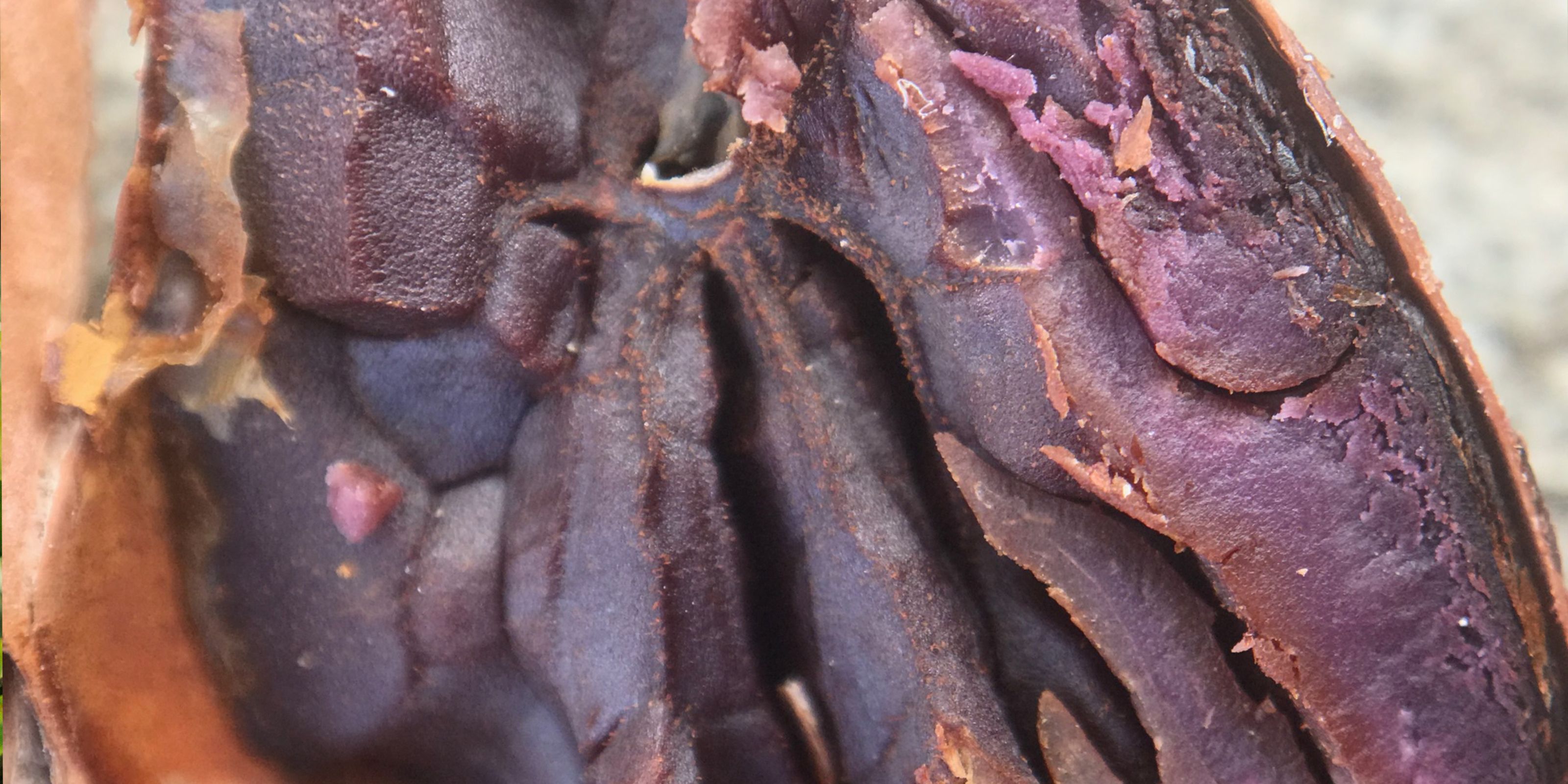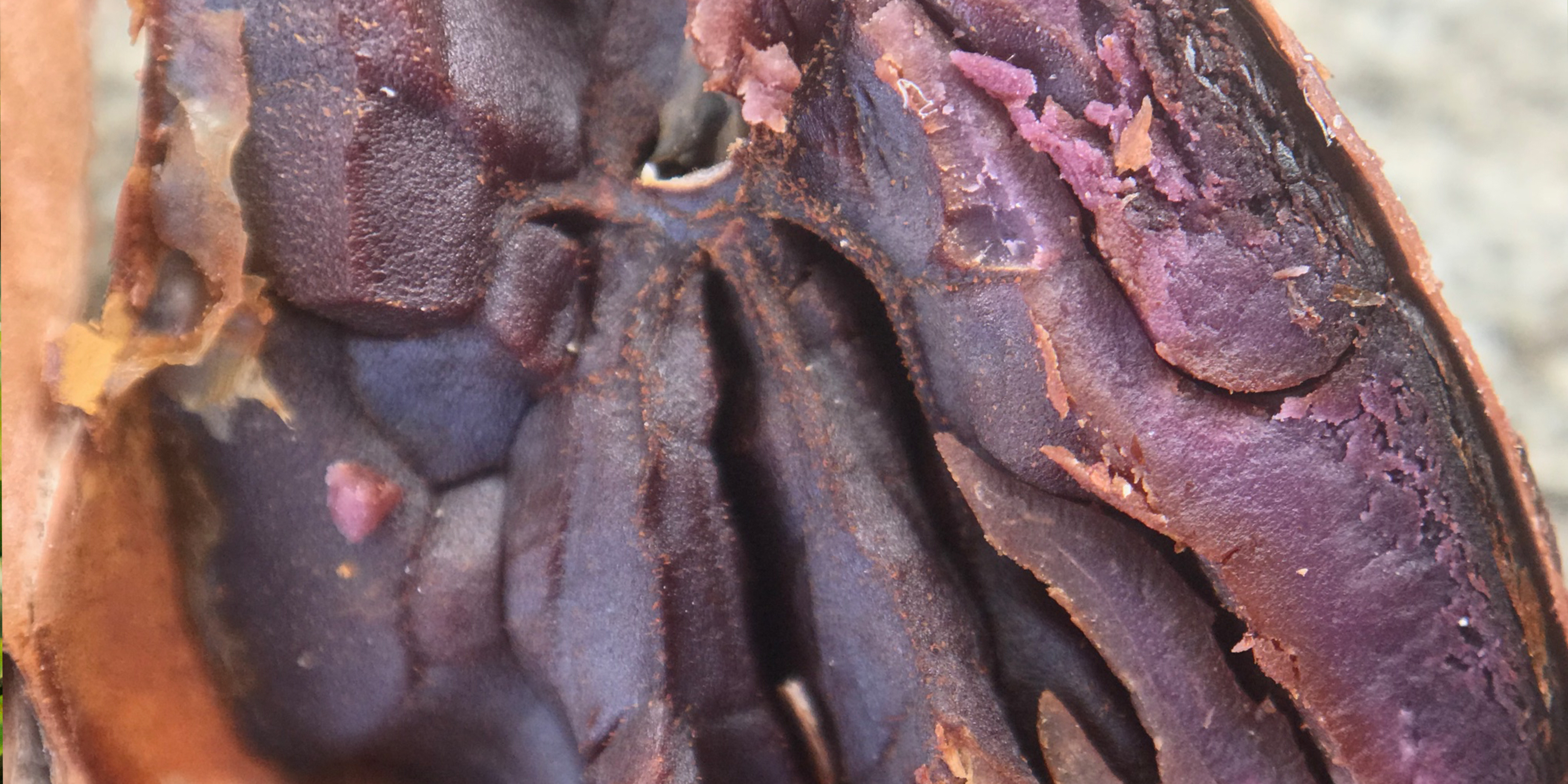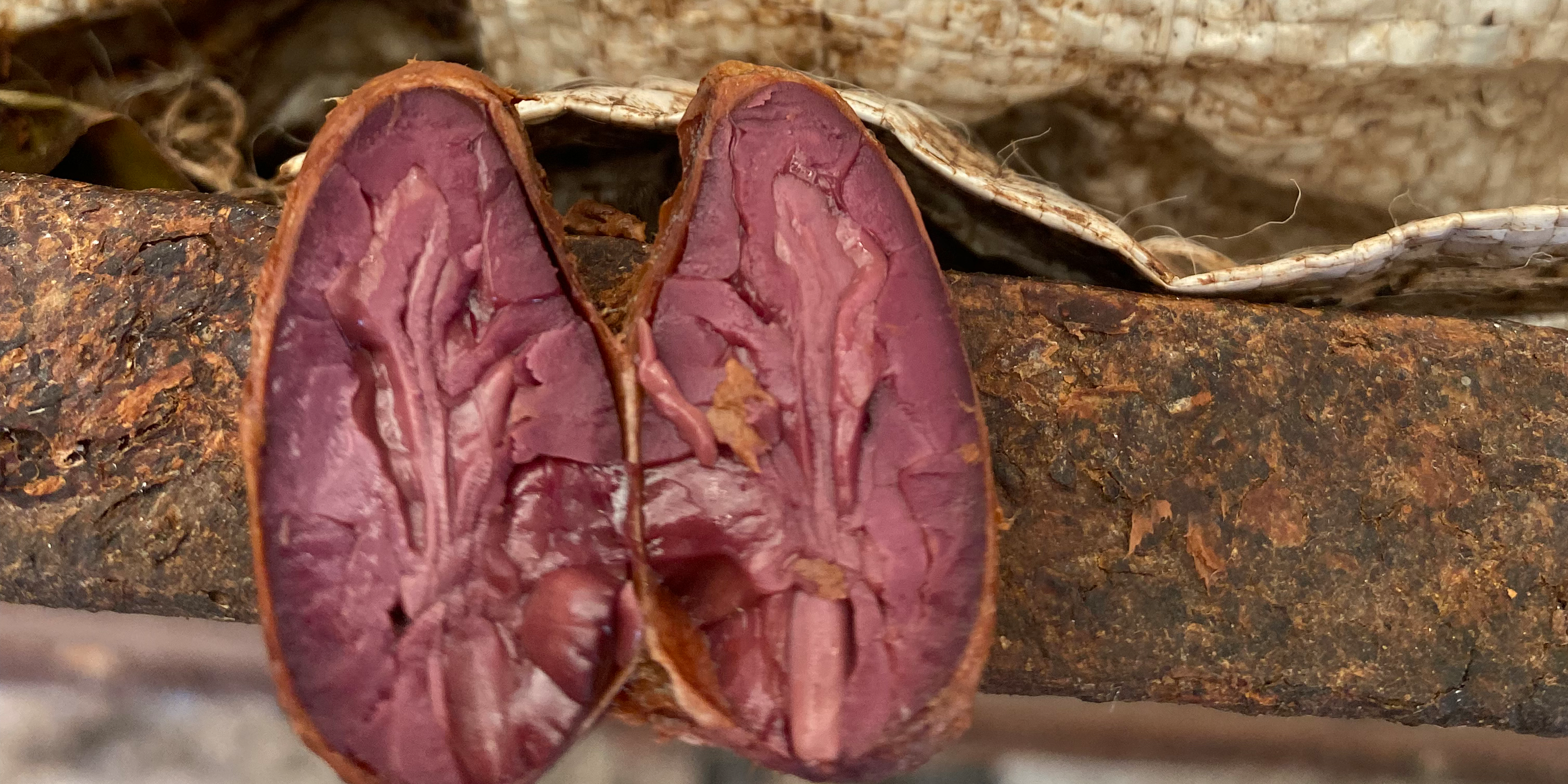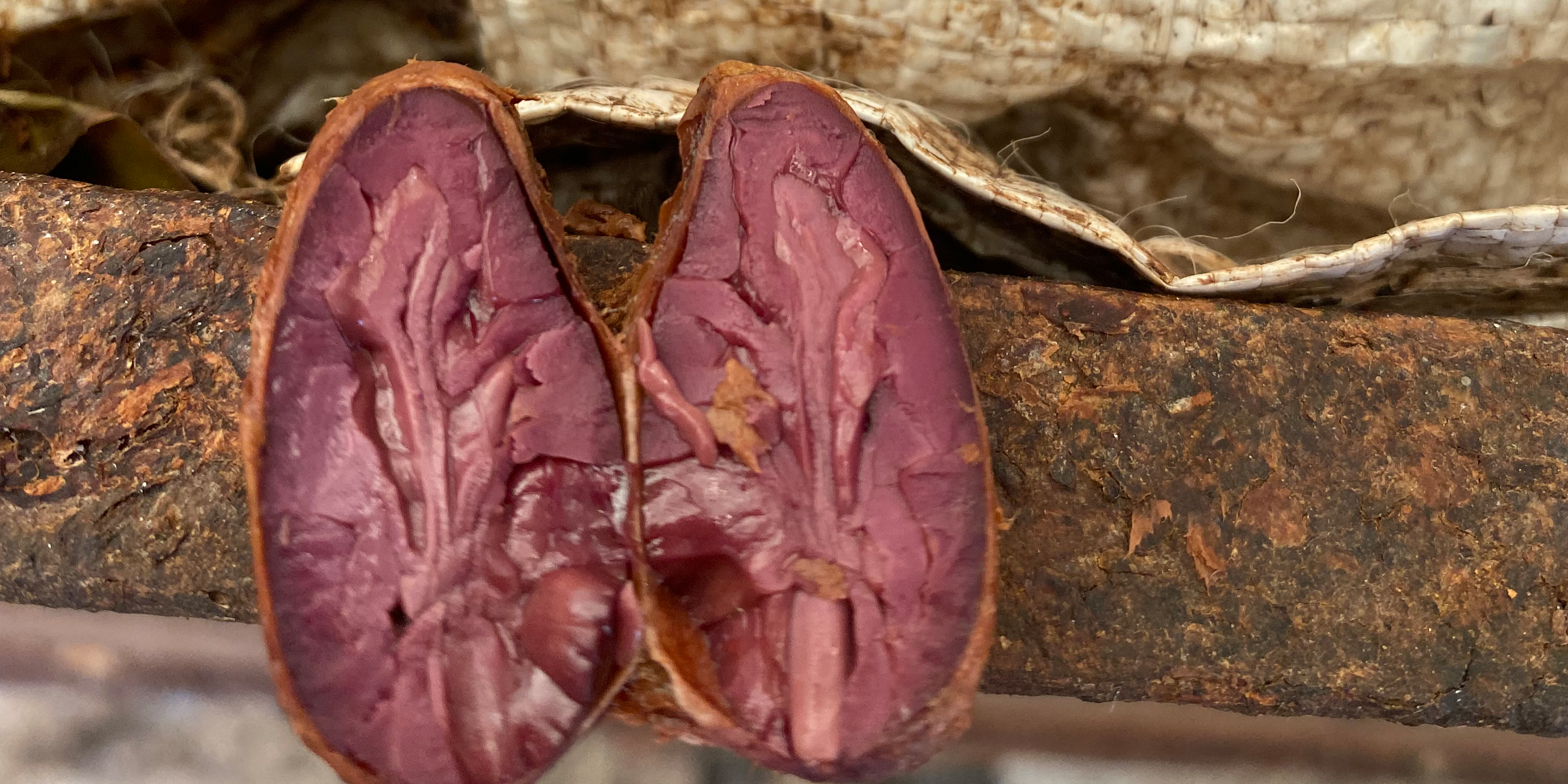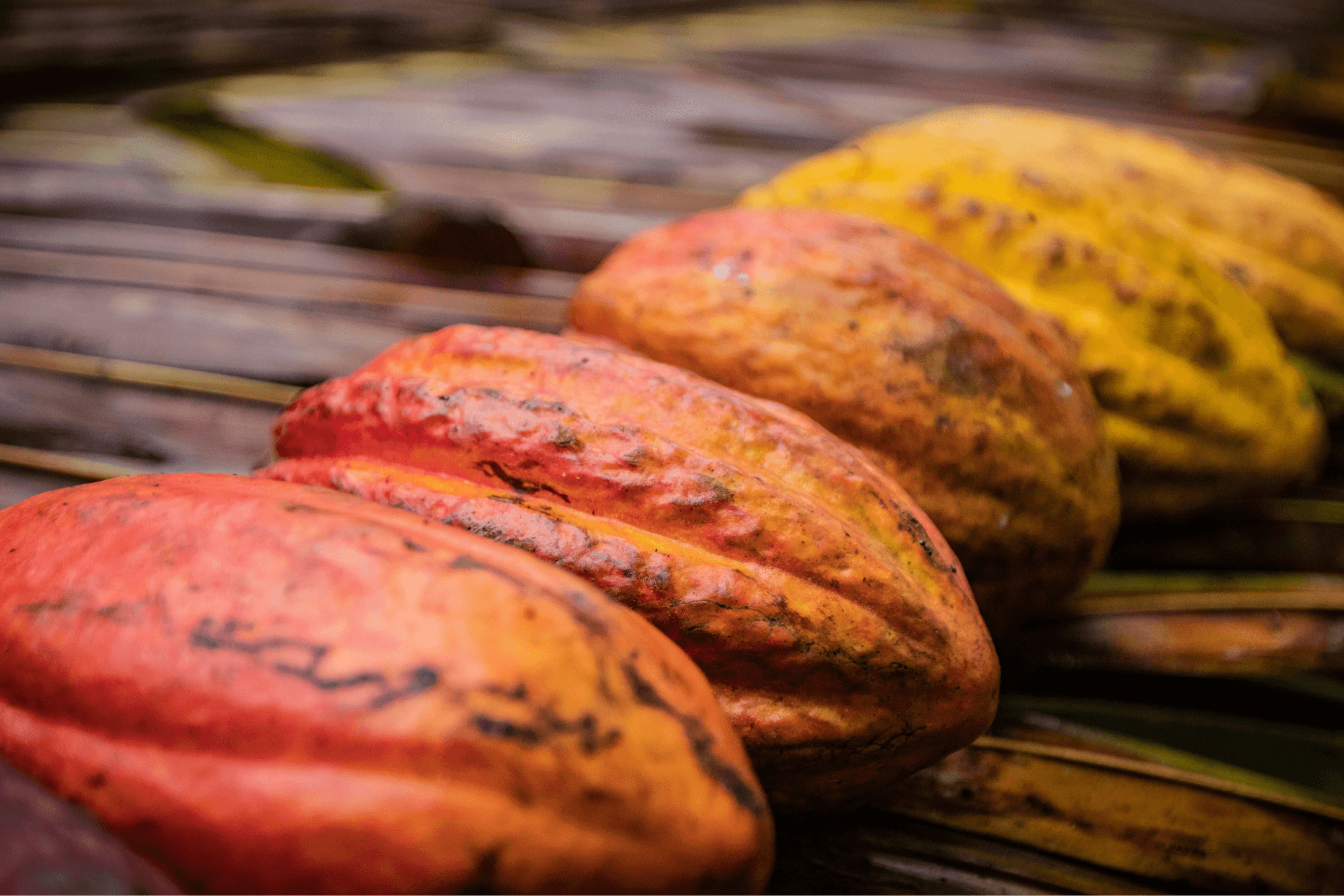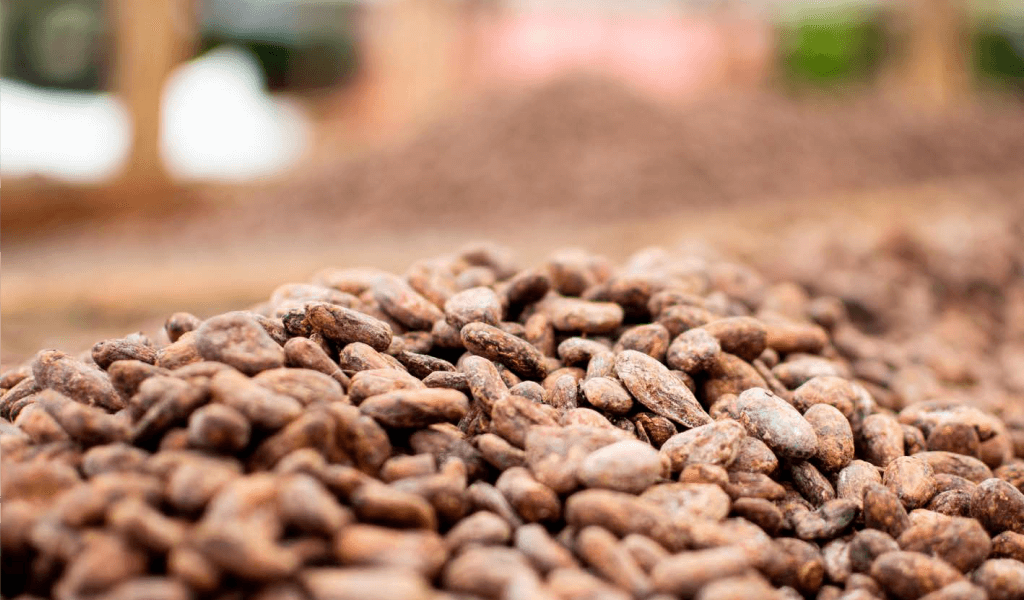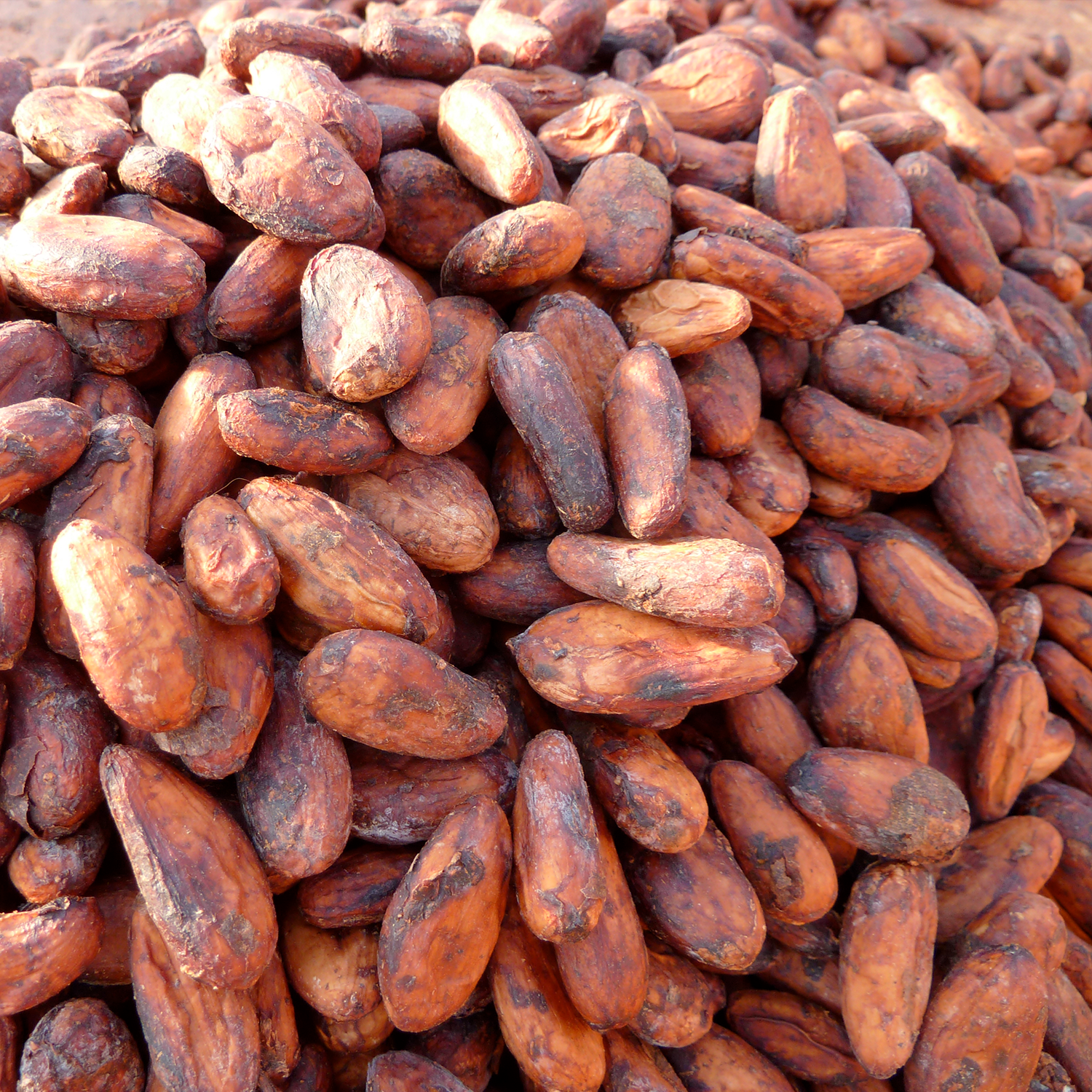
Physical Evaluation
Representative Bean Samples
In order to ensure the flavor profile and quality we have agreed upon with our partners, we sample the cacao several times before making it available to makers. We request representative bean samples during the harvest, prior to shipping, and once containers land to evaluate the cacao.
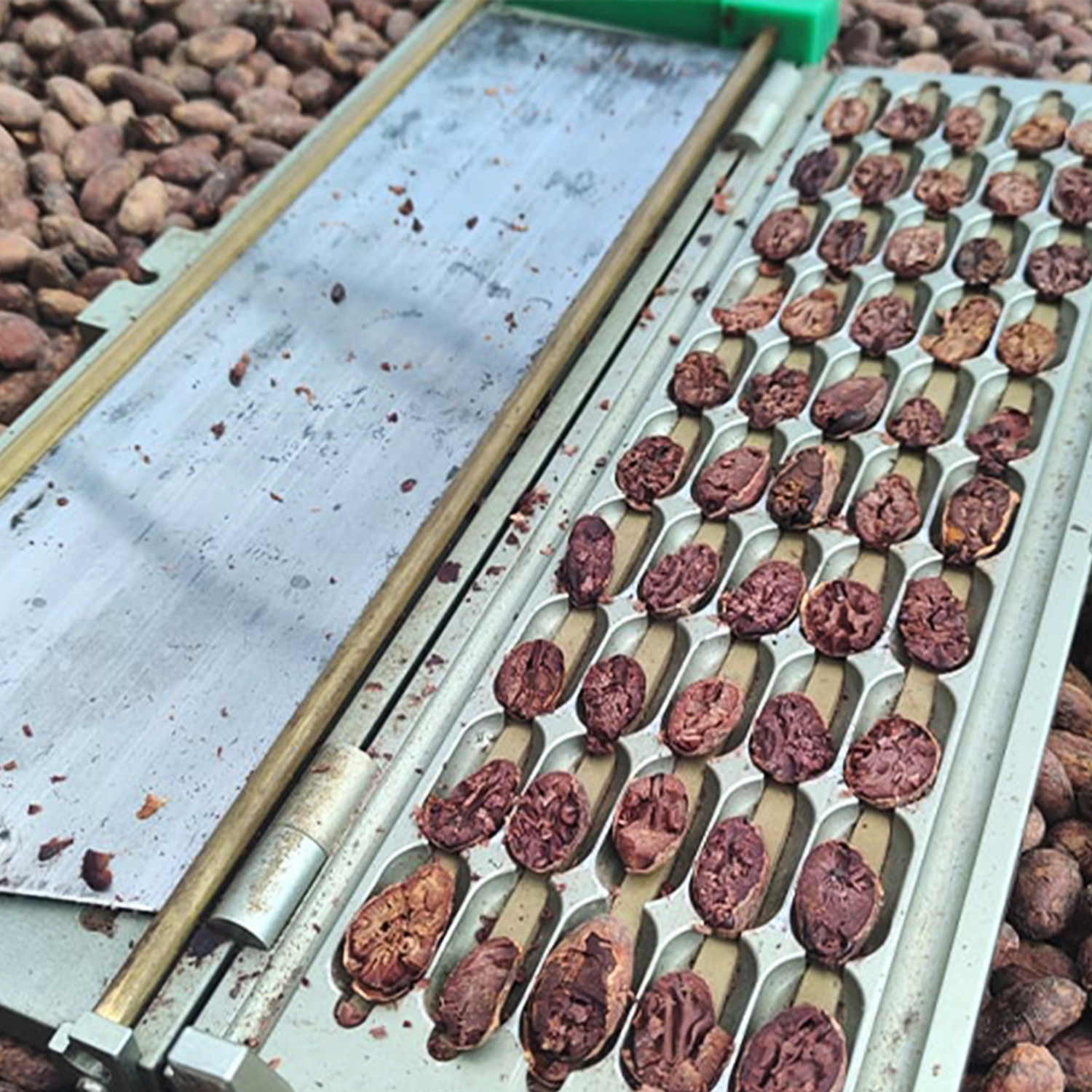
Physical Evaluation
Evaluating Samples
We use a guillotine to cut beans and evaluate the percentage of well fermented beans, check for slaty beans and internal mold.
The size of the beans is evaluated in relationship to a standard 100g portion of the sample.
We check the humidity and identify debris, sorting loss, external mold and if any beans are germinated.
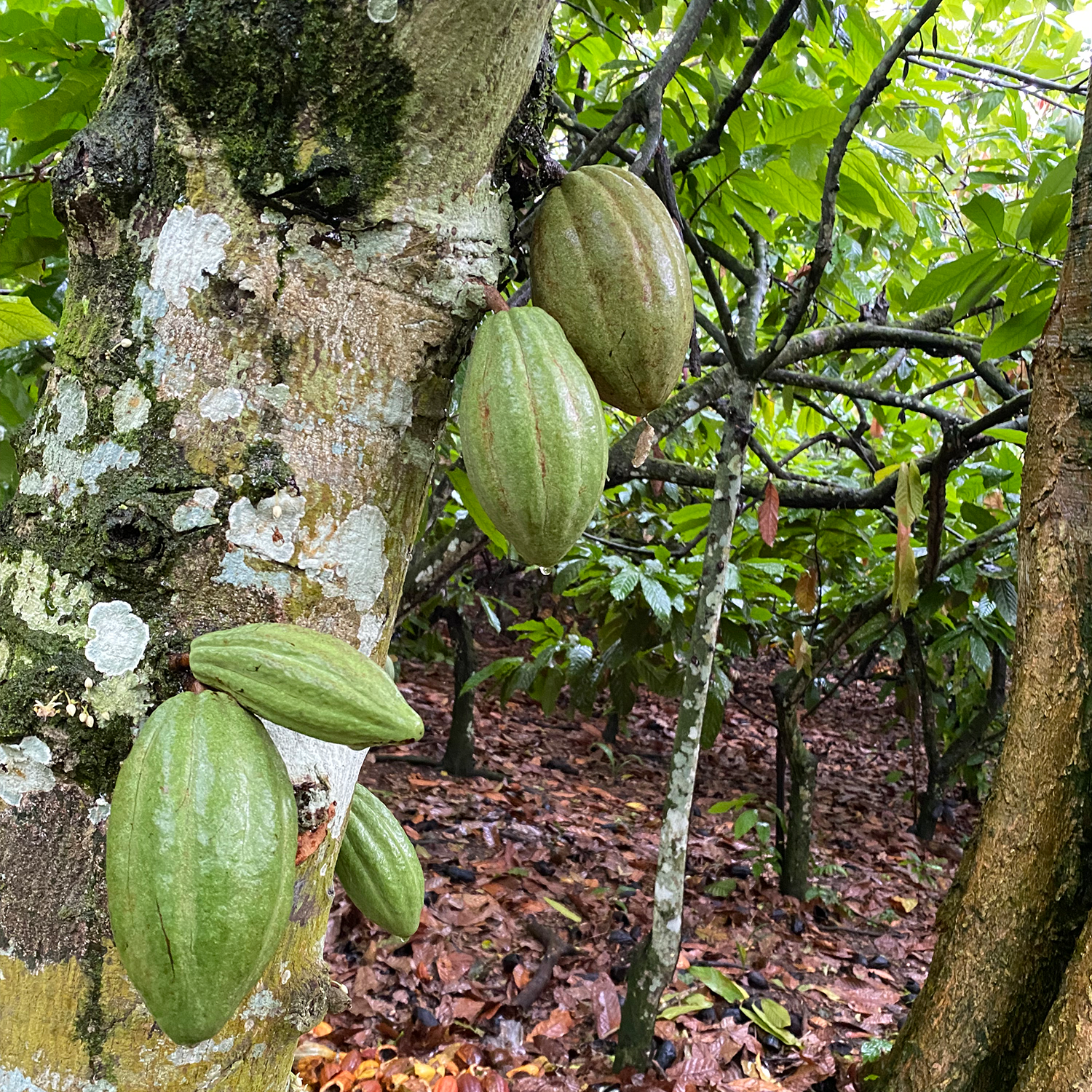
Physical Evaluation
Metals & Pathogen Testing
Uncommon Cacao tests all cacao for heavy metals and for pathogens.
We test all of the origins we work with each year for cadmium and lead. Additionally we test every container for pathogens like salmonella and E.coli.
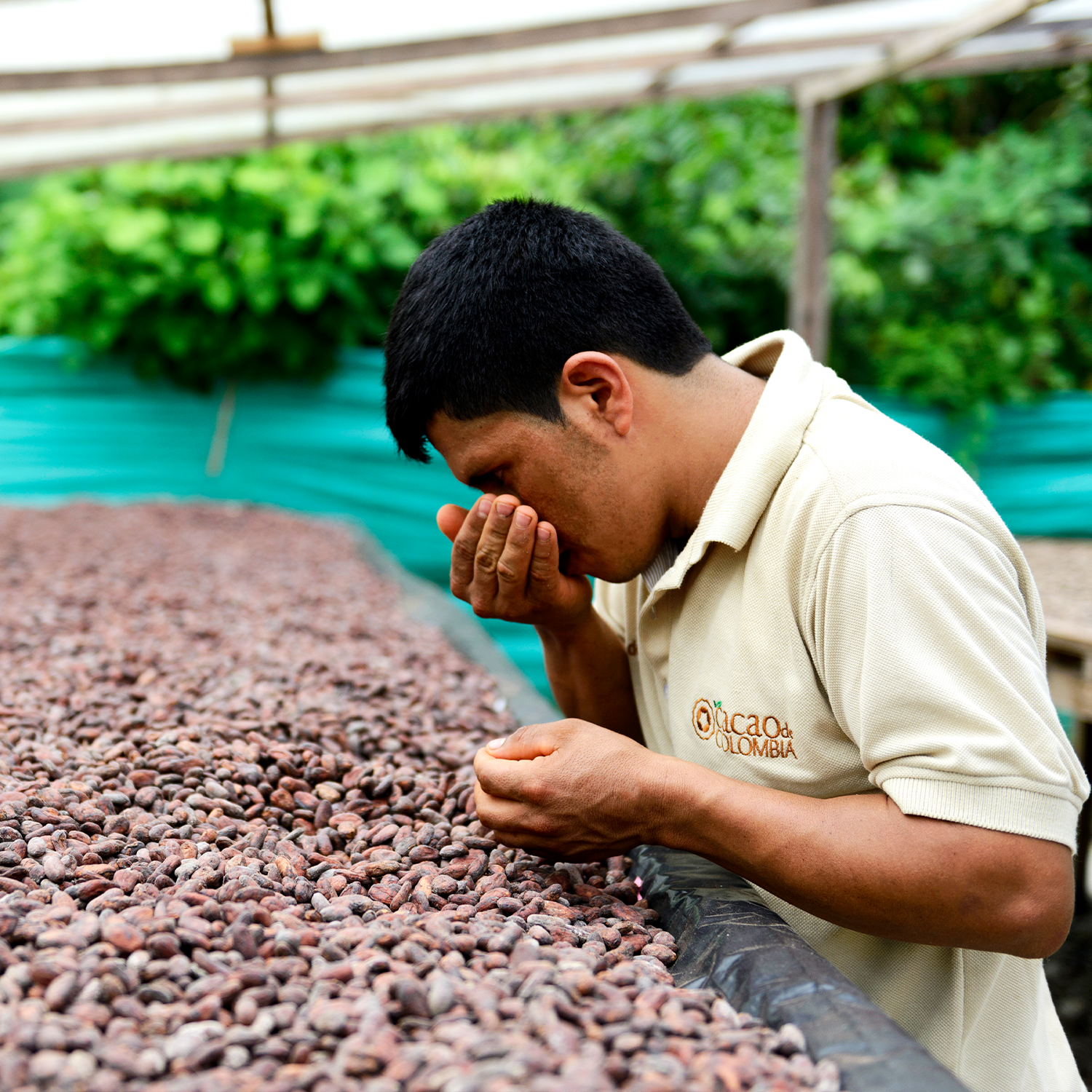
Sensory Evaluation
Aroma
After a complete physical evaluation has been completed we conduct sensory evaluations.
Our team begins with smelling. This happens at two stages, once before the beans are processed into 100% liquor, when they are whole and unroasted. Next we discuss and document the aroma once the liquor has been prepared.
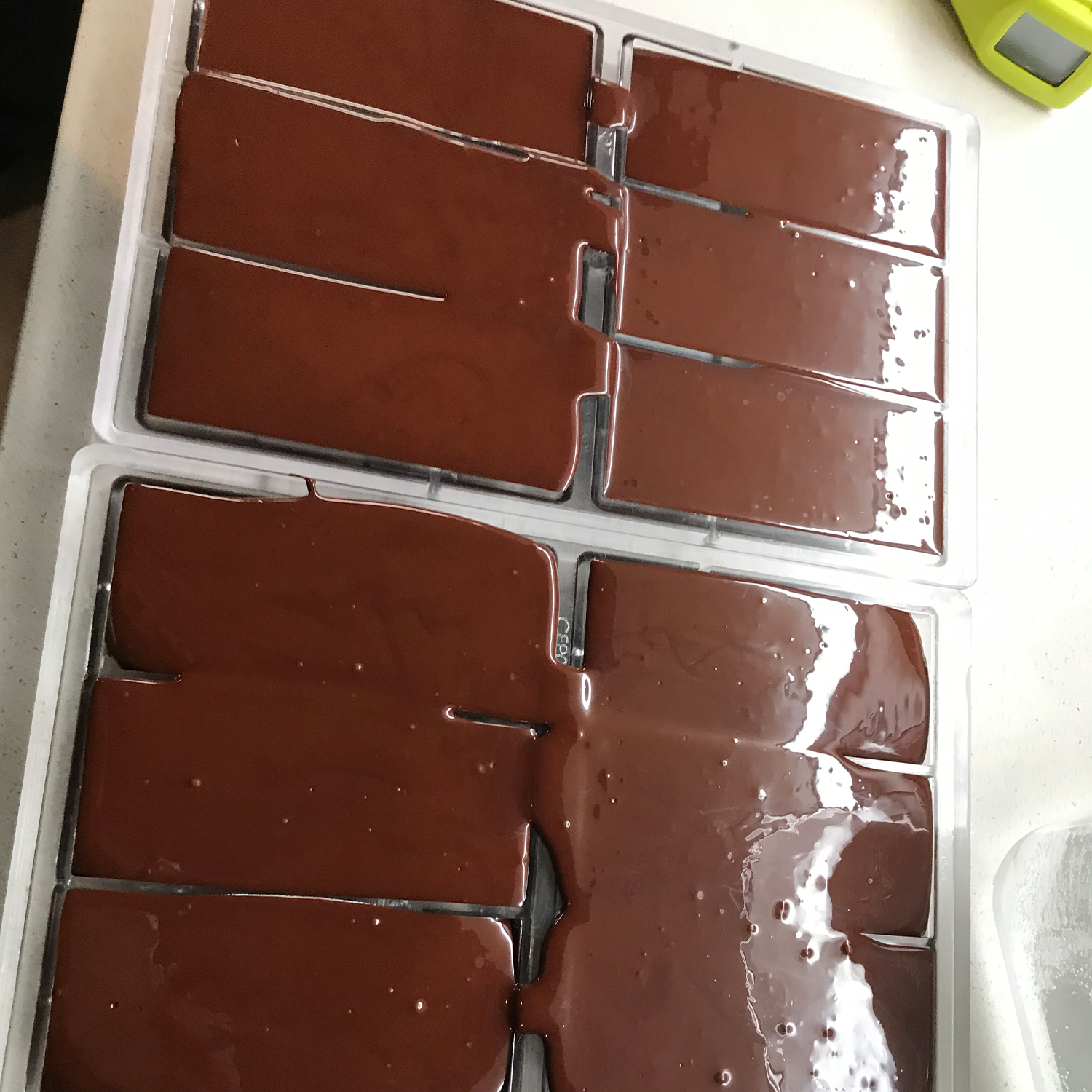
Sensory Evaluation
Liquor Processing
Once we have completed the physical evaluation and have discussed the aroma of the whole beans, we prepare 100% liquor.
We process liquor by roasting in a convection oven using the International Standards for the Assesment of Cocoa Quality and Flavor Protocol.
Next we crack, winnow and grind the cacao for 8-10 hours in a stone grinder. Then we mold the liquor and allow to cool before tasting.
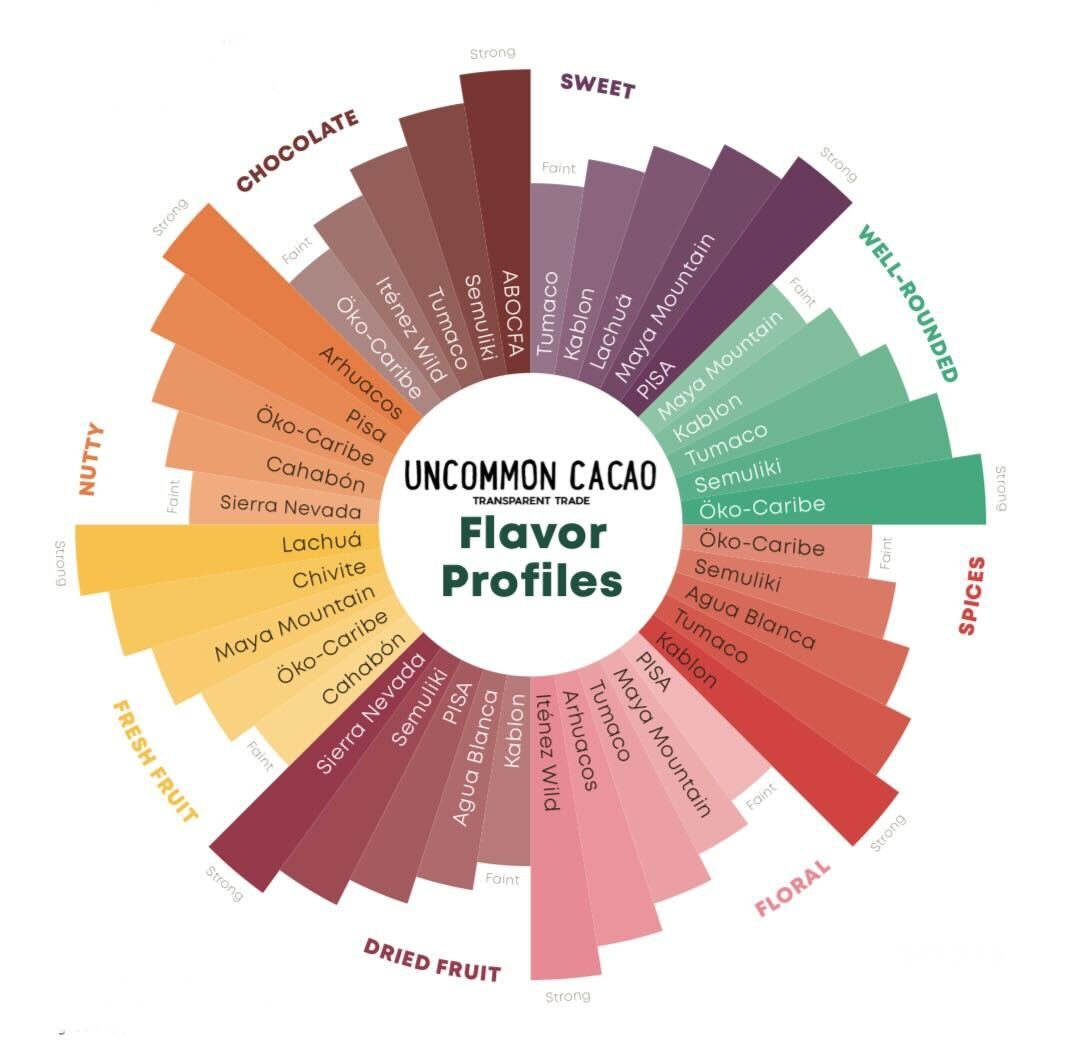
Sensory Evaluation
Tasting & Calibrating
Collectively we grade each of the cacao samples we receive using our evaluation protocol form.
First, we note the acidity, bitterness, astringency, and if we taste any defects. Next, we note the specific flavor profiles you will see on each of the flavor wheels we publish for the origins we offer. Specific notes of Floral, Sweet, Spice, Nutty, Cocoa, Fresh Fruit and Dried Fruit are all documented.
We calibrate as a company and with our partners to ensure alignment around quality and sensory standards.
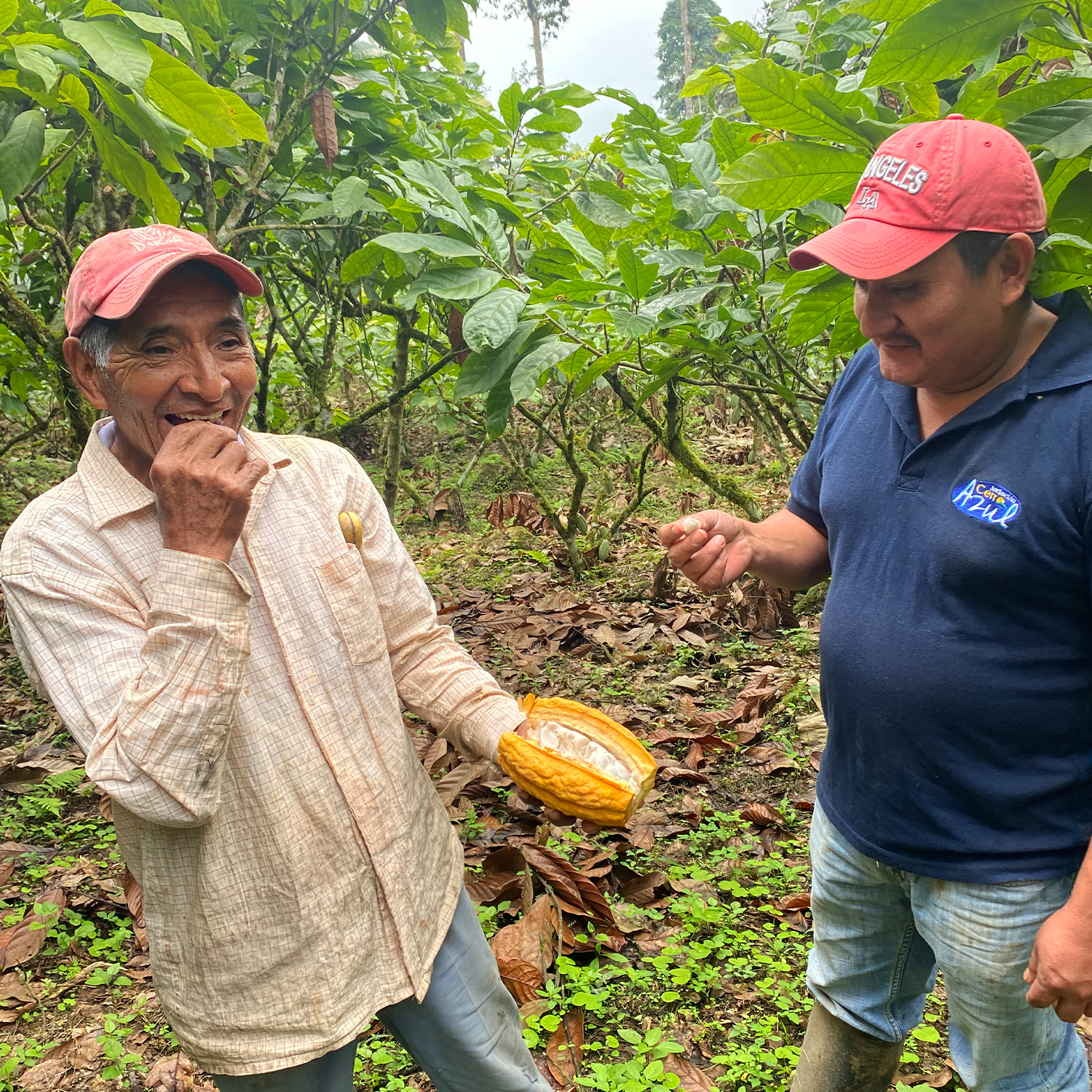
Sensory Evaluation
A Note About Tasting
The flavor notes we share in the bean bios and beyond come from our sensory analysis of 100% cacao liquor made in the Uncommon Cacao lab.
We are not making chocolate, adding sugar, or roasting specifically for flavor unique to each bean - therefore the notes we share are meant to be a guide, or a jumping off point.
We are always open to continuing the conversation and expanding our horizons by calibrating with your chocolate and sharing our feedback with you.
